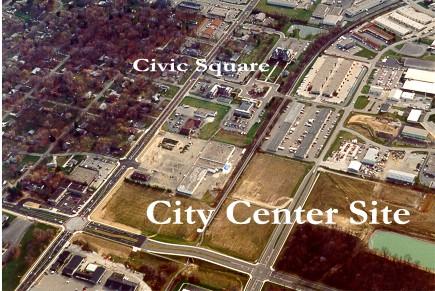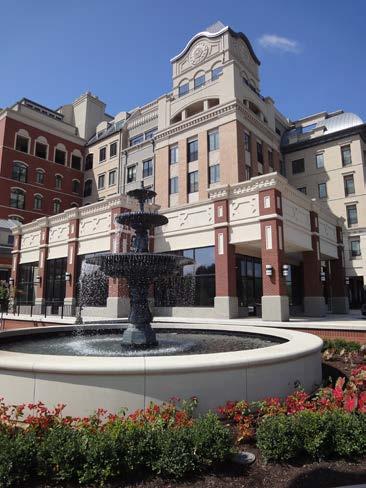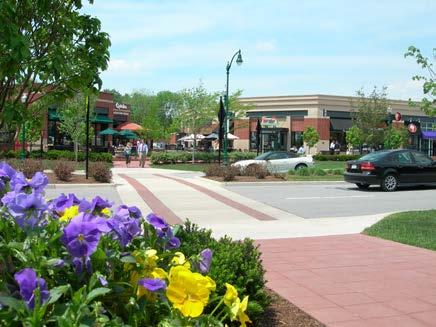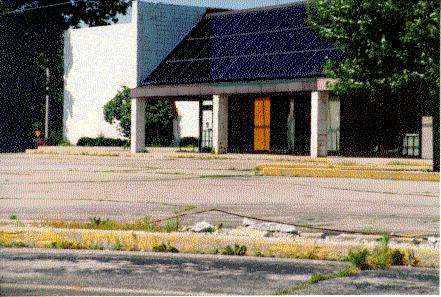
4 minute read
The City of Carmel: An Overview of a Decade of Growth and Prosperity 1996–2006
For nearly three decades, the city of Carmel, under the leadership of Mayor Jim Brainard, has grown from a rather typical north suburban car-centric city to a world-renowned city known for its infrastructure, development and redevelopment, arts and entertainment, diverse culture and, of course, roundabouts. Brainard is Carmel’s first seven-term mayor and is one of the longest serving mayors in the United States. Most cities would take a few centuries to achieve the milestones that Carmel has in 20-plus years.

Advertisement
Under his tenure, Carmel has experienced tremendous growth and prosperity. It is considered one of the fastest growing cities in the United States and is recognized as a model of modern urban planning around the world.
Carmel Monthly will be highlighting some of the city’s more notable accomplishments and substantial developments over the last couple of decades, each quarter in our publication, to reminisce along with longtime residents of Carmel and to share with folks who are new to the community what came before the development of the
According to the Carmel Central City Core Redevelopment Study completed by Indiana University Public Policy Institute, the city has more than tripled its population from 1990 to 2010 and was estimated at 86,946 in 2017.
Redeveloping the Inner Core of Carmel
Since Mayor Brainard took office in 1996, several improvements to the city’s infrastructure, the development of the outlier areas and redevelopment of the inner core have been started and completed, and new major projects are in process as the city continues to grow and evolve.
Many came to Carmel to enjoy the lifestyle in the growing city that was being transformed through the redevelopment efforts of Mayor Brainard, who was first elected in 1995. He has transformed a deteriorating Main Street into the Arts & Design District and built a new downtown called City Center from an abandoned strip mall.
He reinvigorated investment in the area and has created a vibrant, walkable central core that allows residential areas and businesses to thrive. This brought many new offices and corporate headquarters to Carmel, which spurred a second boost in population that included more people moving to Carmel to live, work and enjoy life. In the year 2023, that trend continues.
A Look Back at the Redevelopment with Mayor Brainard
“When we started, we knew that the Arts & Design District [formerly Old Town] wasn’t big enough for a ‘downtown’ and for what would eventually be 50 square miles of city — double the size of Manhattan,” Brainard said. “We campaigned on wanting to invest in the infrastructure. There was tremendously bad flooding in that area, so we had to get the infrastructure fixed first. We put up [the Gateway] arches and promoted the district to businesses, letting them know that if they located here, they would be supported by the city, infrastructure improvements and by the community events and festivals.” vividly. I was getting off of an airplane. And this was pre–cell phone days. I had to find a payphone to call the redevelopment lawyer to see if it had closed. We put in City Center Drive to get people to and from our City Center.” and was living in the motel but wanted to start a garden. The shovel that he borrowed was really used to bury his wife on the property.” a destination location in north Carmel. But by the time that Brainard had taken office, it was a blight on the city and a dangerous place to its inhabitants. Brainard and an entire team of state and local public safety departments congregated in front of the motel with one mission that Friday night: to shut it down permanently.
In the summer of 1997, public discussion of City Center began during a time when Indiana suburbs were developing strip centers, regional malls and market-driven subdivisions with minimal entry points that prohibit expedient entry and exit for the various public safety agencies. The mayor had another vision, and the city took steps toward creating a downtown redevelopment and “urban place-making” initiative. The significant construction in the redevelopment areas has earned national and international accolades.




The agencies who responded to yet another death at the Carmel Motel, discovered the horrendous health conditions had just joined the mayor’s staff heading up communications, coordinated the press to walk through the motel, along with the mayor and the agencies, as additional witnesses to the myriad of violations. Hamilton County Superior Court Judge Steve Nation [Retired] would be the one to support Brainard’s request to permanently close the Carmel Motel following an emergency hearing. The land that once housed the motel was redeveloped and is now the southern entrance of the Clay Terrace development.
“It was August 8, 1998,” Brainard recalled. “The Carmel Motel was … a problem. Two murders occurred there, both within a fairly short period of time. A man who was occupying the motel had murdered his wife and had borrowed a shovel from the garden and hobby store next door. Testimony later came out that the man had told the manager that he was short on money
To the west of downtown Carmel, Brenwick Development and a group of selected, high-end custom homebuilders began building an architectural marvel known as the Village of WestClay. The developers broke ground on the then 686-acre Traditional Neighborhood Development (TND) in 1999 and introduced a whole new concept of neighborhood planning and living to Indiana with its Broad Street Home Show in July 2000.

Carmel adopted the City Center Redevelopment Area Plan in 1998. The plan was for City Center to become a focal point and gathering place for residents and tourists. In February 2000, the Redevelopment Commission entered into a project agreement with AMLI Residential Properties for what was the first CRC mixed-use development project in the City Center (312 market rate apartments). In June 2001, the construction of the first commercial building (Kestner Building) in City Center commenced, and the construction of the Monon Greenway was completed.








